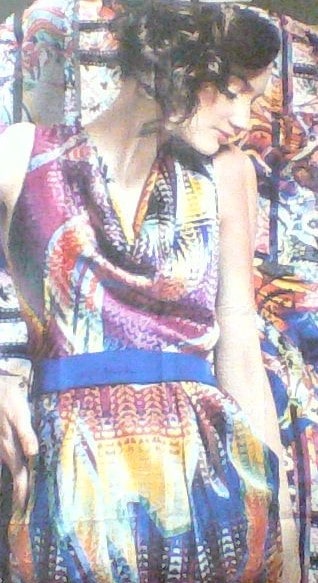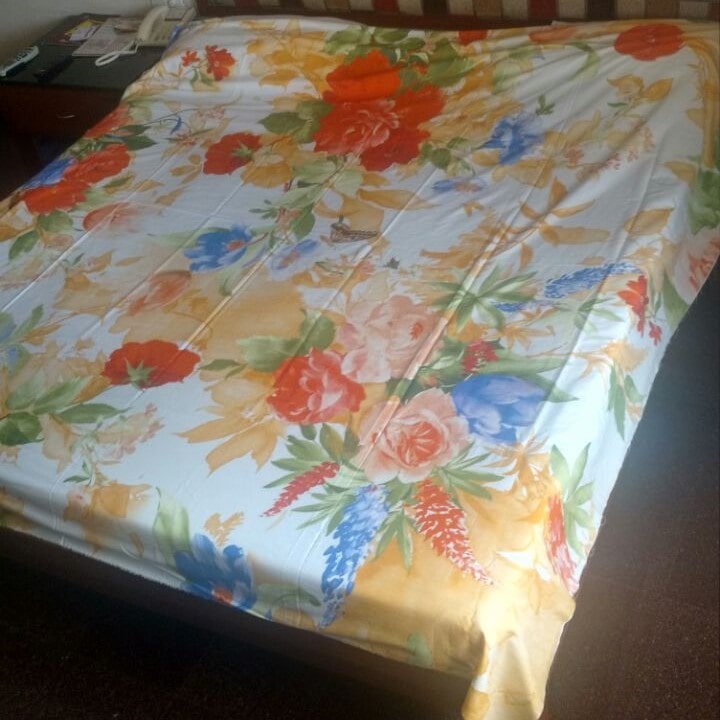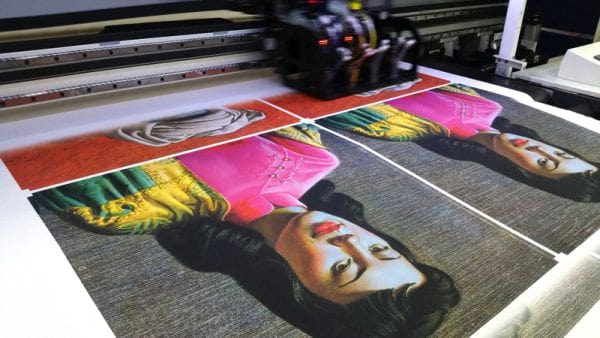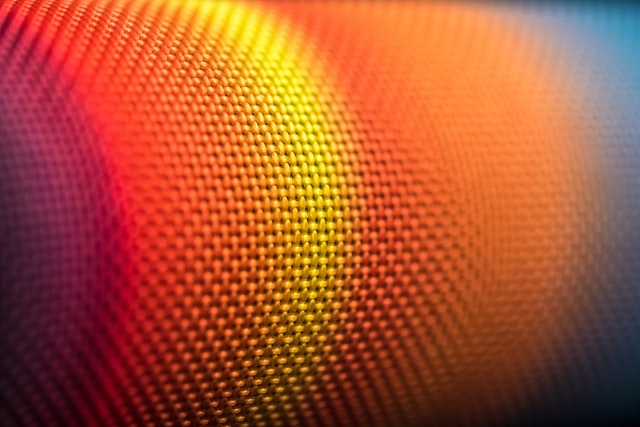By: Kamal Kulshreshth/Market research and International Business Specialist

Digital inkjet printing for textiles made its appearance at the fag end of last century. Today it is the most exciting zone in the textile value chain. Estimates vary but most would agree that the rate of growth of digital fabric printing in the textile industry exceeds 10% year on year.
Digital inkjet fabric printing has been a game-changer in the textile industry. It transcends existing boundaries of creativity and therefore profit margins. The benefits of digital textile inkjet fabric printing have been gone over and over again but who should invest in digital inkjet fabric printing? The answer is far from “anybody who can afford to invest a few hundred thousand dollars”. This is why some of the biggest and most prominent textile companies in India, Nigeria, Iran, Egypt, Colombia, Brasil have still not taken the first step into digital fabric printing.
Cotton, silk, nylon, polyester, and beyond; not every fabric type is created equal. Each material requires a certain kind of ink chemistry, which is why your fabric printing machine needs to be made specifically for your application.
What Type of Fabric Printing Machine Do You Need?
The fabric printing machines we’ll be focusing on are dye sublimation, direct-to-fabric and hybrid printers. Ultimately, your printing application will determine the type of fabric printing machine you need.
If you’re printing on materials like cotton, silk or nylon, a direct-to-fabric printing machine will provide the exact chemistry you need. For polyester materials, you’ll need a dye-sublimation printer.
1. Not an alternative production technique
Digital fabric printing is not competing with conventional rotary or screen printing that may collectively be termed analogue printing systems. Digital fabric printing cannot match the economy of scale that an analogue system affords. There are digital printers that match printing speeds of analogue systems but that’s another story that has to be looked into – not one size fits all.
Even today most of the digital inkjet fabric printers that get sold in the world have printing speeds of less than 100 sqm/hour. The most important thing for an investor is to understand what digital printing can, analogue printing cannot.

Only when an investor sees value in what digital fabric printing can, beyond the boundaries of analogue printing does it make for a successful business venture. Only those who are ready to invest in marketing and business development for an enhanced product offering will reap the real rewards of fabric printing. It is not just creating value but also understanding the value and conveying the value down the sales channel right up to the person wearing a garment that is digitally printed.
So, get creative and digital printing will work for you. Spoonflower is one of the more well known digital printing success stories.
2. How much and how long
If exploiting the creativity of digital fabric printing is not your cup of tea, you can still make money by specializing in printing small lots. The value you are delivering in this model is the turnaround time – from the need to print to strike-off to printing the final 10 metres. This is a different business model and it all depends on how steady the stream of orders for small lots will come your way. Here be prepared to fight price wars. You might get an early starter advantage but others will catch up. You will need to improvise to keep ahead and then you will need to get creative not just in the print designs but in business as well. Improvise continually to stay ahead.
I remember business discussions between an India exhibitor at Irantex in 2017 about how much he would deliver of single print design. The Iran buyer wanted to offer scarves in as much variety as possible and the Indian exhibitor with his digital printer in India would have liked at least 200m of a single design. Between 100 and 200 m of a single design, they found a way to work together. That’s digital printing changing the way you do business.
3. Existing process house
There is no reason why an existing fabric processing house should not invest in a digital printer. They have the setup, the know-how and the experience. All they need is to carve out an airconditioned space of 30 m2 to install a digital printer and get started. It is easy for them. A process house would already have in-house facilities to prime the fabric from RFD (ready for dyeing) to an RFDP (ready for digital printing) state. They have the equipment to fix the ink on fabric after printing and they have the entire line of washing and finishing that is needed to deliver high-quality printed fabric packaged the right way.

To start with they should not think of shifting but adding a tiny percent to their existing print runs; ie. create a niche for which they should be able to command a higher price. Here, very often the refrain is that we have no demand for fabric printing. Of course, you have no demand for fabric printing! Your buyers know you cannot offer digital fabric printing and are probably sourcing their digital prints from other sources. Those sources are enjoying the fruits of early adaptors of technology while you are stuck with a cost+profit business model.
The way is not to ask your buyers if they will pay more for digital fabric printing. Just invest and dazzle the buyers with digital effects. The superior aesthetics or the novelty of digital designs will compel buyers to shell out a little more. However, whet the appetite of your buyers only if you can feed it. No point in whetting the appetite and then leave them to look for source it elsewhere. Then you don’t get the business. So prepare first.
Some analogue printing businesses could also benefit from fabric printing for their strike-off needs. There would still be aspects of colour matching to deal with but it can be done and there is considerable scope for cost saving in sampling.
Another reason for digital fabric printing for existing fabric process houses would be to make the digital mimic prints on dyed fabric without actually dying. Mimicking a dyed fabric with a direct to fabric digital printer and with prints on it to boot, would not only save immensely on the dyes and chemicals but also on energy and water.

4. For Newbies
If you are a starter with no background in textile printing, think again. Excitingly creative as it might sound, digital fabric printing does not do away with the process. It still requires an understanding of textiles and textile chemistry. The best way then would be to combine forces with somebody who knows textiles and textile chemistry.
There are numerous stories in India and Bangladesh of how first-time investors started off with just an investment of $ 150,000 worth of equipment to produce some 500 m of printed fabric per day and then grew their business to several thousand meters of digitally printed fabric per day.
Digital fabric printing also spurs new business concepts. In upmarket Cairo, there is a shop that has 2 or 3 types of digital printers where anybody can walk with his t-shirt to get customized printing done within a day.

5. For garment makers
Creative ideas that fashion designers have might be too nascent to be shared. With digital fabric printing, added creativity can be brought into fashion. Cut patterns can be printed and then converted into garments so that the head of a dragon starts on the right shoulder and winds its way to the bottom left of a printed top.
Fashion designers who want to be exclusive would also find digital printers a boon. Intricate designs can be created that would be almost impossible to replicate or copy.
So who should not invest in digital printing? If you are a volumes player where nothing short of 100,000 meters of fabric will please you as an order, digital fabric printing might not be right for you, even if you understand all there is to know about manufacturing. High volumes and digital fabric printing are diametrically opposite. When you try to make those two ends meet, the result is always a compromise.

Type of Fabric Printing Machine
Direct-to-Fabric Printers
When it comes to cotton, silk, nylon, and all other (non-polyester) fibers, the dye sublimation paper transfer process won’t work. But that doesn’t mean that you can’t print on these fibers! The process will just require different ink chemistry so you can print directly onto fabrics and not have to transfer from paper. Polyester applications that require deep ink penetration — like printing on flags — can also benefit more from a direct print process.
Dye Sublimation Printers
Dye-sublimation printing is an integral part of the textile market. The process creates the perfect chemistry for printing on polyester, which is one of the most popular textiles used for soft signage at tradeshows, airports, and malls. Sports apparel and home décor such as tapestries and shower curtains are also best printed using dye-sublimation techniques.
Hybrid Printers
Hybrid industrial inkjet printers bring together the best of both worlds. The Hybrid Printers can print on both transfer paper and direct to the fabric.
The concept here is to choose which method is best for the application. For example, some users prefer to print their polyester fabric backlit displays via the direct to fabric method instead of using transfer paper. This helps the ink to get deeper penetration into the fabric. The result can lead to bolder color once the fabric is backlit.
Maintenance & Service
When you’re evaluating your digital fabric printing machine options, pay close attention to the level of maintenance and service included with your purchase. For manufacturers, the distributor will typically provide service and support.
Training
For the most part, both dye sublimation and direct-to-fabric printers are very intuitive machines and similar to other wide-format printers. First, there should be a review of the proper operation and maintenance for the printer. Then the focus should be on software and application training.
The instructor should understand your intended print application and should adequately teach you how to use your purchased equipment to accomplish your application goals.



























We would like to introduce our new range of dyestuff specially curated for inkjet & digital textile printing:
DIRECT BLUE 86, 87, 199 / REACTIVE BLUE 72 / ACID BLUE 185
In a few months we shall also introduce other Direct, Reactive and Acid dyestuff for inkjet and digital textile printing
At Ushanti Colour Chem our products go through stringent quality control measures and have been carefully curated for:
High purity / Long-term sustainable use / Least damage/crusting to ink machinery employed / Very good solubility, least conductivity / 100% insoluble FREE. (0.1 microns) / Ion exchange process / Usage of surfactants to create a conglomerate of insoluble for more efficient removal.
We assure you that we shall fulfil your entire requirements of Dyestuffs manufactured by us.
Ushanti Colour Chem Limited
88/6-7-8, GIDC, Phase I, Vatva, Ahmedabad 382 445 India.
Ph.: 91-79-25833315, 25894903, 25830128